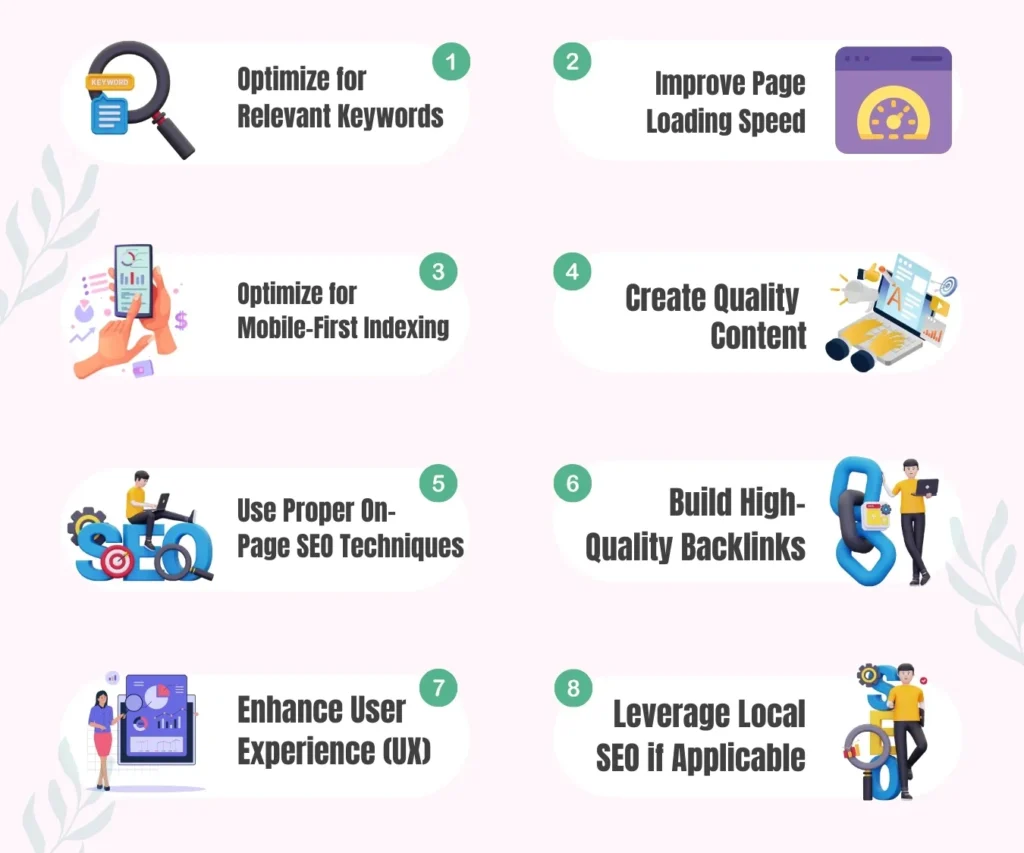Keywords are still the cornerstone of SEO since they enable search engines to match your content to user searches and grasp it. But keywords have changed.
Emphasize long-tail keywords and LSI (Latent Semantic Indexing) keywords that reflect user intent rather than cramming material with high-volume keywords.
Search for keywords that fit your audience’s search intent using Google Keyword Planner, Ahrefs, or SEMrush—low-competition, relevant, low-keywords aligned tools.
While maintaining a first-rate user experience, try to naturally use these keywords in headings, subheads, meta descriptions, and alt text for images.
Since consumers want websites that load quickly, page loading time greatly affects SEO results. The Core Web Vitals from Google stress speed, interactivity, and visual stability for page performance. Load times can be effectively lowered by compressing pictures, cutting code, and using browser cache. Evaluate your website’s speed using GTmetrix and Google PageSpeed Insights to find areas needing work. Faster websites lower bounce rates and increase customer satisfaction, favourably impacting rankings.
Google has taken a mobile-first indexing stance since mobile searches outpaced desktop searches. Therefore, Google mostly crawls and ranks your website using the mobile version. Make sure your website is responsive—that is, that its layout, graphics, and information flow naturally to several screen sizes. Mobile optimization increases SEO results in addition to user experience. Using Google’s Mobile-Friendly Test tool, evaluate the mobile-friendliness of your website and make any required changes.
A basic element of SEO is content quality. Google prefers websites with worthwhile, educational, and orderly content over those with pointless or redundant material. Emphasize creating fresh, original, engaging material that fits readers’ search intent. Incorporate visuals, infographics, and videos to vary text and improve readability. Changing previous material to keep it current can also help your results.
On-page SEO is page-specific optimization meant to increase search engine ranking. Title tags, meta descriptions, headers (H1, H2, H3), and internal linking are basic on-page elements. Every page should have an original title and description, including pertinent keywords, without overwhelming them.
Use headings and subheadings to help search engines and users understand your material’s organization. Additionally beneficial is using schema markup—structured data—which lets search engines better understand the information on your website and enhance its search result presentation.
SEO depends critically on backlinks—links from other credible websites to yours. They tell search engines your material is reliable and worthwhile. Pay special attention to obtaining premium backlinks from reputable websites pertinent to your field of business.
Guest posting, producing shareable material, interacting with influencers, and industry peer networking are some great strategies for establishing backlinks. Steer clear of spammy link-building strategies since Google fines websites using link schemes.
Better SEO results are exactly correlated with a pleasant user experience. Simplify navigation so consumers may quickly locate what they are looking for. Use unambiguous calls-to-action (CTAs), improve the layout of your website, and minimize pop-ups that upend user interaction. Google prizes websites that keep consumers interested and happy. A good user experience lowers bounce rates, increases dwell time, and tells search engines your website is worthwhile.
Invite client feedback and incorporate local keywords and phrases pertinent to your field of business into your work. Local SEO increases ranks in locally relevant searches and helps you attract possible clients nearby.
Whether you are looking to rank your small business or large business, our team of SEO experts can maximize your business’s ROI. Contact us today and witness better website ranking, which leads to better sales.


